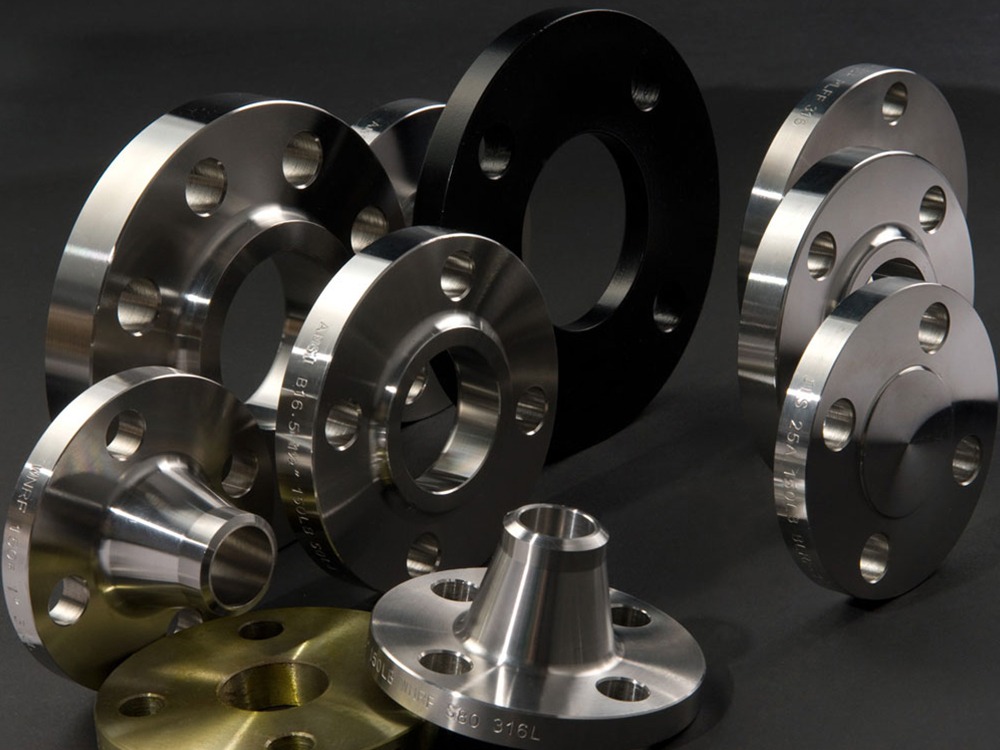A steel flange is a forged or cast plate-like device. These can be used to strengthen and connect columns, beams or pipes. While this concept is generic, the installation of flanges can be very specific.
Steel flanges are joined by bolting, welding or threading to a fitting. Steel flanges allow for cleaning, inspection or modification to be undertaken easily.
Flanges are usually manufactured in a circular shape, but because steel is extremely versatile, can be made in square and rectangular styles. Flange faces typically come in flat, raised, ring joint, and tongue-and-groove forms.
Flanges may also be used as part of manufactured steel sections. These include parallel flange channels and tapered flange beams. Parallel flange channels are U-shaped beams used for construction. They are high in strength and come in a variety of sizes. Tapered Flange Beams are I-shaped sections, often used for cross-sections of girders.
The main types of standard steel flanges are weld-neck, slip-on, socket weld, lap joint, threaded and blind. Let’s take a more in-depth look at each.

Ranging from the slip-on to the threaded variety, we take a look at the main types of steel flanges.
Weld-Neck Flange
As its name suggests, this type of flange is attached to a fitting by welding the neck of the flange. Due to its reinforcement and ability to transfer stress, it is suitable for high-pressure applications. These flanges may also be used in hostile environments with extreme temperatures.
Slip-on Flange
Again, made obvious by its name, this flange slips over pipes or fittings. It is manufactured with an inside diameter larger than its outside diameter. As its strength under pressure is about one-third of the Weld-Neck Flange, it is suited to low-pressure applications. Less accuracy is needed for cutting pipes when using Slip-On flanges. For this reason, it is commonly preferred over the Weld-Neck in low-pressure applications.
Socket Weld Flange
The Socket Weld Flange is similar to the Slip-on Flange. It is often used for high-pressure applications that are smaller in size. The fitting is inserted into the sockets of this flange and attached by a fillet weld at its top. This method can result in a smooth flow of the substance inside a pipe. With more stressful applications, another internal weld may be used.
Lap Joint Flange
Lap Joint flanges are often used in projects where they will need to be disassembled. This can be for cleaning or inspection purposes. Their pressure ability is likened to the Slip-on Flange. Rather than being welded, these types of flanges slip over a pipe or fitting.
Threaded Flange
Similar to slip-ons, Threaded Flanges can be attached by threading the bore. With no need for welding, this places them at a distinct advantage. Threaded Flanges are common in low-pressure applications. As it is often fixed to a fitting through threads, these flanges will not be suited to high-pressure use.
Blind Flange
Blind Flanges are usually blank with no bore. This type of flange is also known as a Blanking Flange. When used with another flange type, Blind Flanges can isolate, fix, seal or end piping structures. It is useful for high-pressure applications and handy for closings pipelines. Due to their suitability in high-pressure applications, Blind Flanges can be used where liquid or gas is transported between locations.
If you are considering steel for any construction purposes and would like a professional opinion, we can help.
Our team expert structural steel fabricators have the experience and knowledge to answer any of your questions and will ensure that you find the best solution to suit your needs. To contact us today, simply call, fax, email for a steel quote or drop by our Brookvale location.